When choosing your newest additions to your dream landscape, you want to make sure you pick plants that will survive and flourish in the spaces you intend to plant them. For example, you don’t want to purchase an exotic flower to grow in your dry, shaded area, only for it to die a few weeks later.
Instead, we’ve compiled a list of the 10 best plants for dry shade to make your selection easier. Keep reading for more information on a variety of shade-favoring plants you’ll want to add to your yard you may not have otherwise thought about.
Lenten Rose
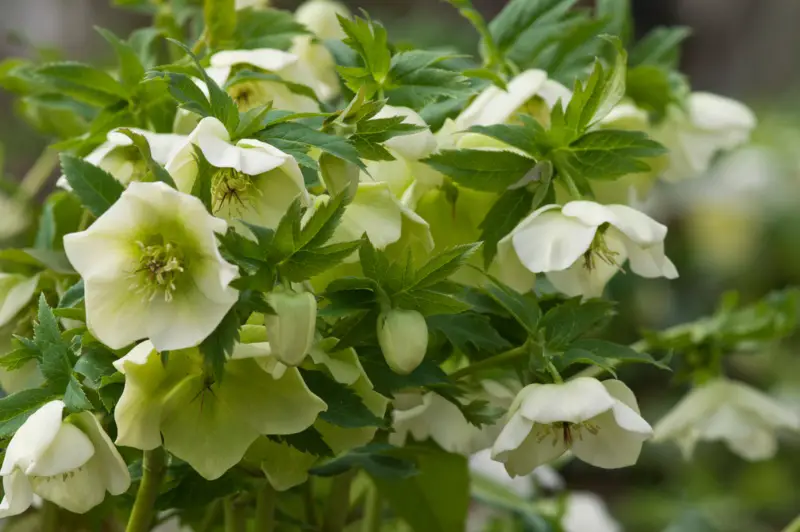
Despite the name, the Lenten Rose plant is not a rose. Scientifically known as Helleborus orientalis, this plant is a hybrid evergreen perennial most closely related to buttercups. The plant blooms during the warm spring months and boasts vibrant yellow, pink, purple, green, or blue flowers.
Since the plant grows in clusters, reaching 18in wide and tall, the Lenten Rose makes for an excellent plant for ground coverage. In addition, the plant does not require too much maintenance except during the winter, when you might notice browned foliage.
However, keep in mind that this plant is toxic to people and animals. So it might not be the best choice if you have pets.
Lungwort
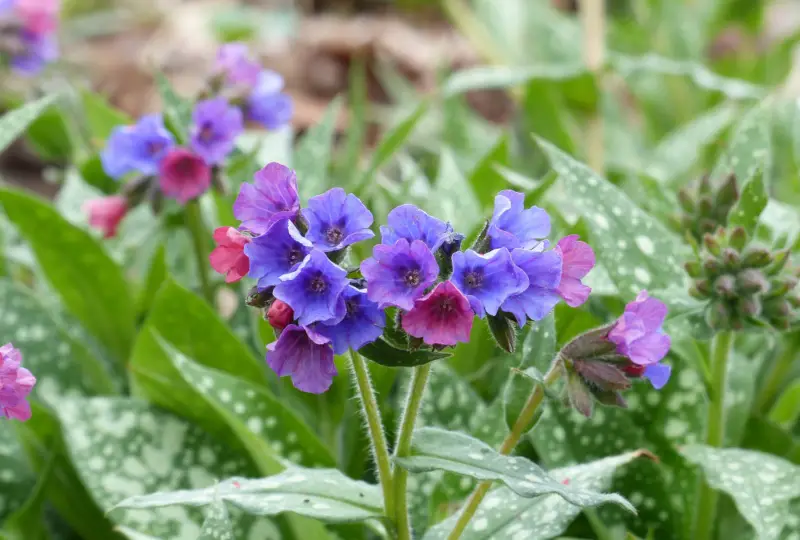
Pulmonaria spp blossoms are bold pink, blue, or white flowers, ideal for adding a splash of color to your landscape despite the less than appealing name. Lungwort also blooms relatively early in the spring, before most other plants.
While the plant does not require constant watering, rather well-drained soil, it does not appreciate growing around tree bases where it might have to compete for moisture. However, it does like to grow in shaded areas.
Keep in mind that this plant can grow up to a foot tall, so you might want to consider planting it for ground cover rather than as a stand-alone feature. Plus, when you plant it for ground coverage, it wards off weeds, meaning less yard work for you.
Hosta
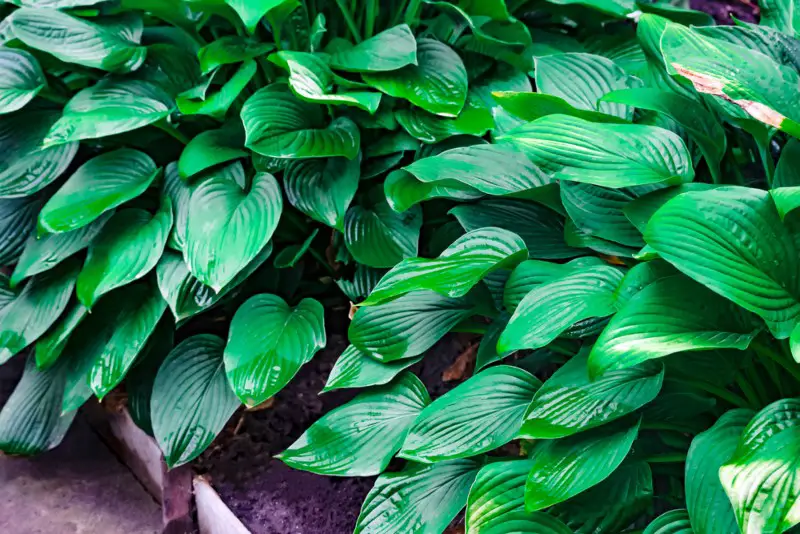
While not a flowering plant, the hosta plant can break up a hum-drum landscape with vibrant greenery and even act as a border. Plus, this dry shade plant requires little to no maintenance, and you only need to plant Hosta in a dry, shaded area and let the plant grow independently.
If you find yourself wanting to plant more Hosta, you can divide it effortlessly. Not to mention, the plant comes in many varieties, so you can pick out different sized, shaped, and colored Hosta to add more mixture to your yard.
Coral Bells
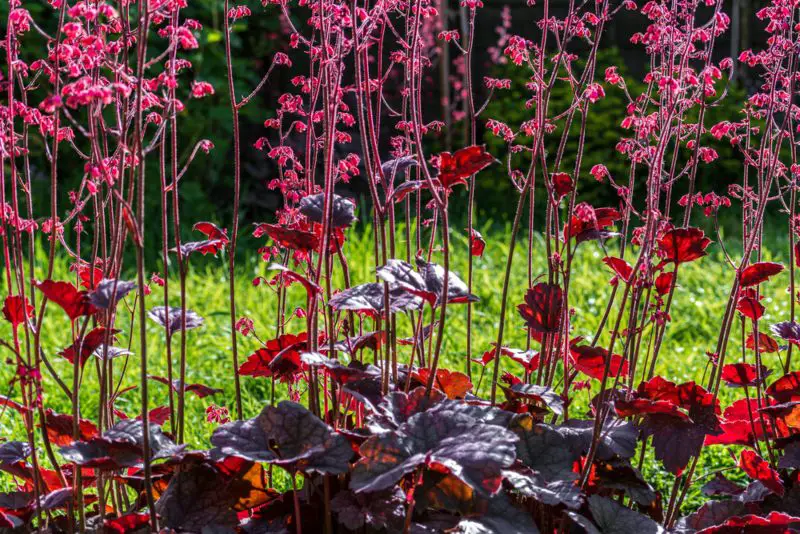
As a plant native to rocky environments, Coral Bells are incredibly durable and low maintenance. In addition, Cora Bells come in many varieties, all of which boast vibrant colors and marbled leaves. Coral Bells tend to favor cold and dry climates, but some variations can tolerate heat and humidity.
The plant also has a unique look. The base is more shrub-like while spurts of flowering reeds shoot up from the center. These individual plants continually grow in popularity, maybe because they tend to attract hummingbirds.
Foamflower
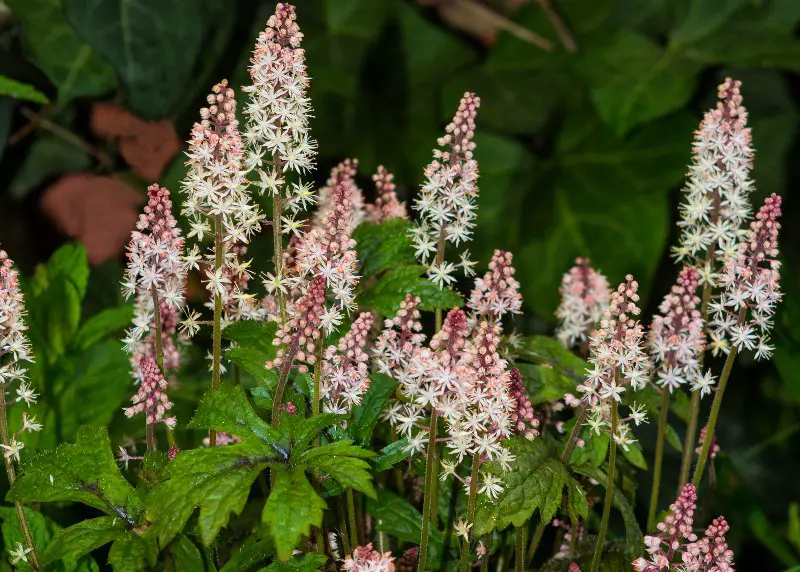
The Foamflower plant is similar to the Coral Bells because it is resilient and endures dry shade conditions. The plant name comes from the white, clustered blossoms that spray from lengthy stems, creating a foam-like look.
Otherwise known as Tiarella cordifolia, Foamflower is native to woodland and forest environments, making it a great choice to plant beneath any trees in your yard. As fall approaches, the plant’s flowers turn from white to autumn hues, but it begins blooming in the spring.
Siberian Bugloss
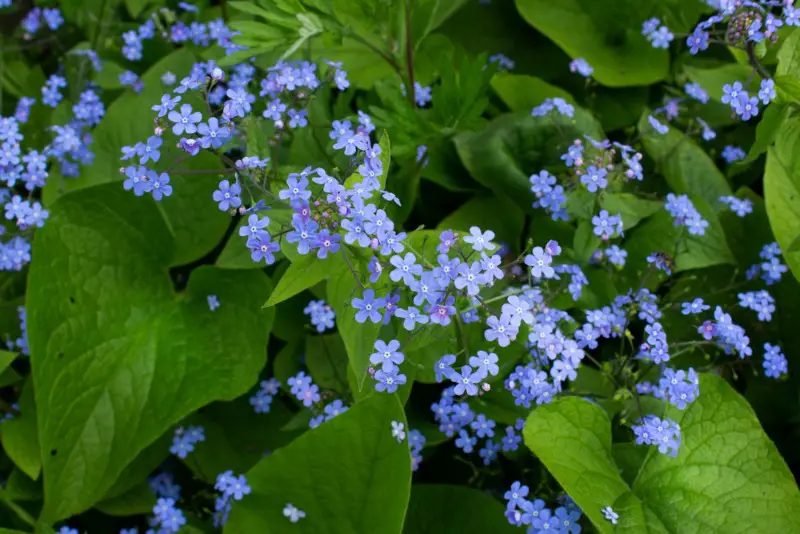
You might not know Siberian Bugloss or even the scientific name Brunnera macrophylla, but you might know its more common name, the Great Forget-Me-Not. As a perennial flower with forget-me-not-shaped flowers, the Siberian Bugloss plant remains attractive well past its blooming period.
Siberian Bugloss clumps together, making it a preferable choice for ground coverage. It might attract a snail or slug at some point during its lifetime but does not warrant any pests or disease.
Bigfoot Geranium
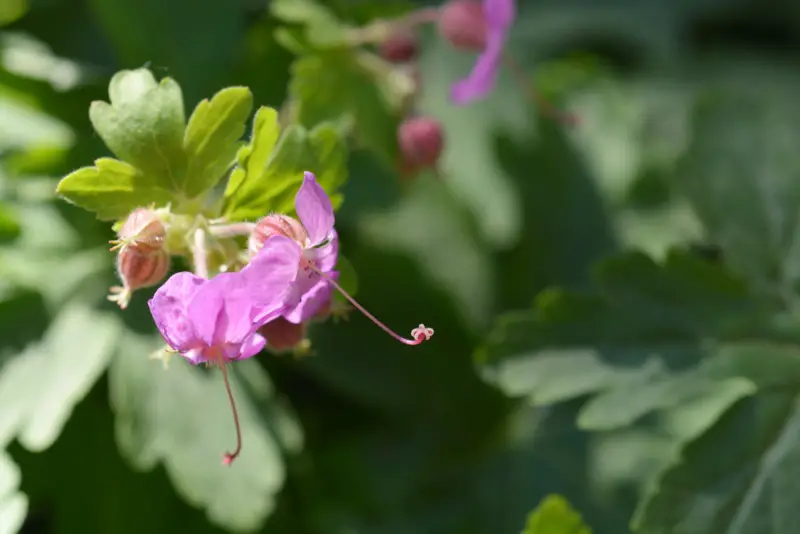
While people tend to think geraniums grow in hot, sunny climates, the Bigfoot Geranium variation does well in dry shade. As implied in the name, the Bigfoot Geranium typically reaches 12-inches in height and can spread outwards up to twice that.
Despite its mature size, you will not need to prune the plant unless you want to size it down. Besides an occasional snip, the Bigfoot Geranium is an incredibly low-maintenance plant, making it an ideal dry shade plant choice for someone who doesn’t want to invest a lot of time in maintenance.
Oregon Grape
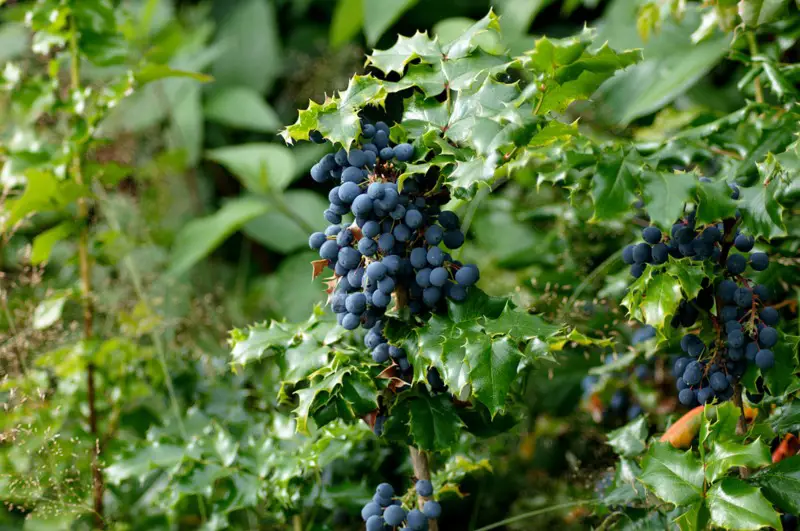
Otherwise known as Mahonia aquifolium ‘Apollo,’ the Oregon Grape attracts many bees and other pollinators to its bright yellow flowers. The showy blossoms begin popping up around early spring and form clusters before bearing fruit in the summer months.
The plant doesn’t require too much maintenance but does appreciate a thorough pruning every other year to maintain its shape and promote healthy growth. However, aside from infrequent pruning, the Oregon Grape doesn’t need much to flourish. Plus, it looks great when paired with a mix of other plants.
David Viburnum
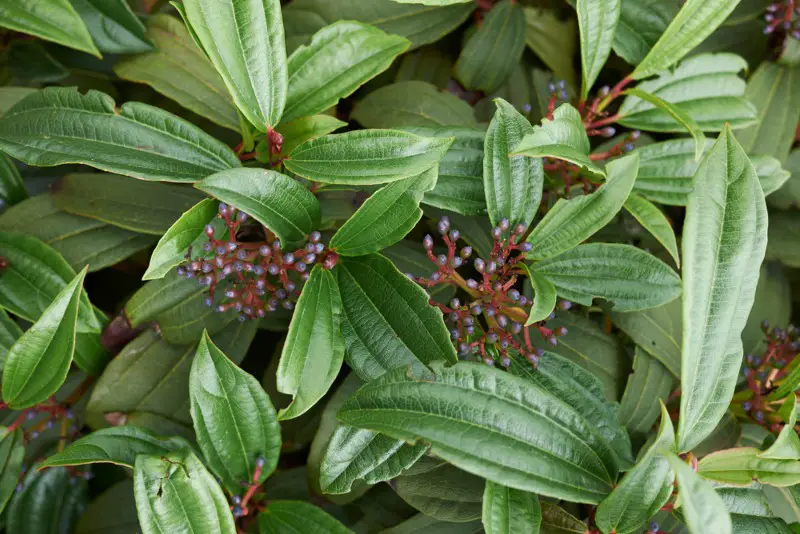
If you’re looking for a dependable plant for dry shade, you might want to consider David Viburnum. Despite the odd name, you can count on this low-growing shrub to produce flowers and fruit nearly all year, every year.
The plant produces cream, white, or pink flowers and deep-colored fruit, which attract all types of wildlife. It also cross-pollinates well and can act as a natural hedge or border in your landscape. While David Viburnum tolerates the shade, it does favor some occasional sunlight throughout the day.
Fern Brilliance Autumn
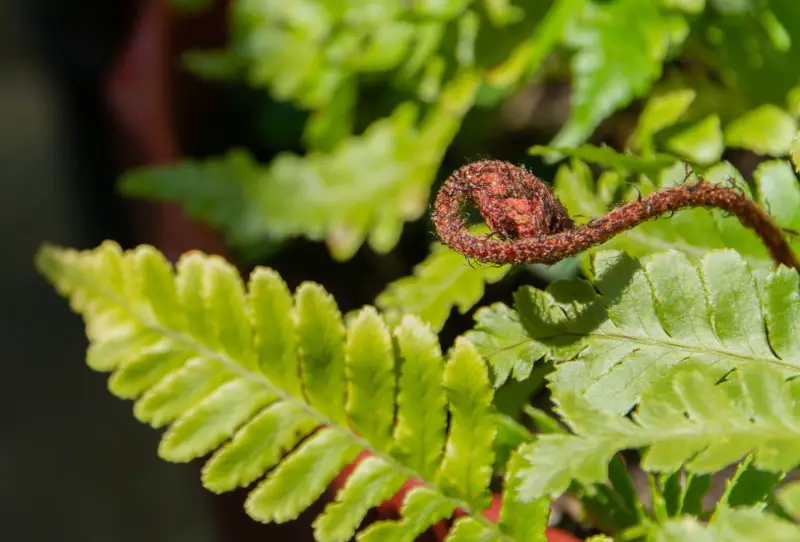
You can seldom go wrong with a fern when looking for an enduring, low-maintenance plant. The Fern Brilliance Autumn variation of a hardy fern requires little to no maintenance and has rich colored leaves ranging from burnt orange to bright red.
The Fern Brilliance Autumn plant makes a high-quality natural-appearing addition to any yard and looks good when paired next to a mix of other plants, including Hosta.




